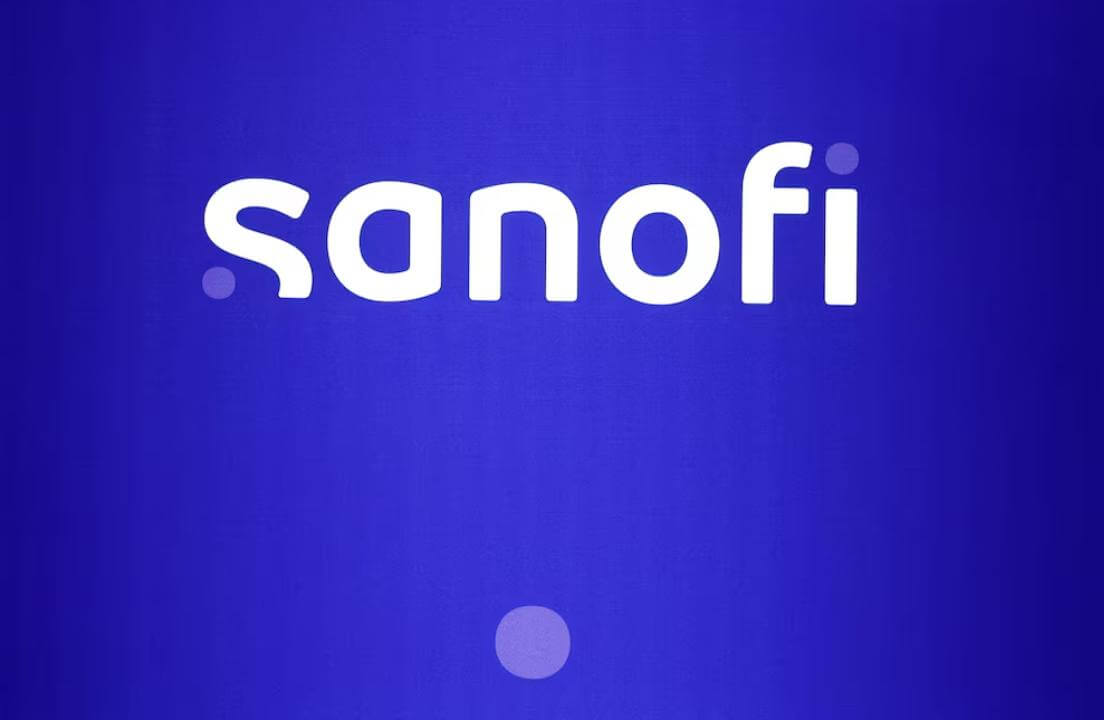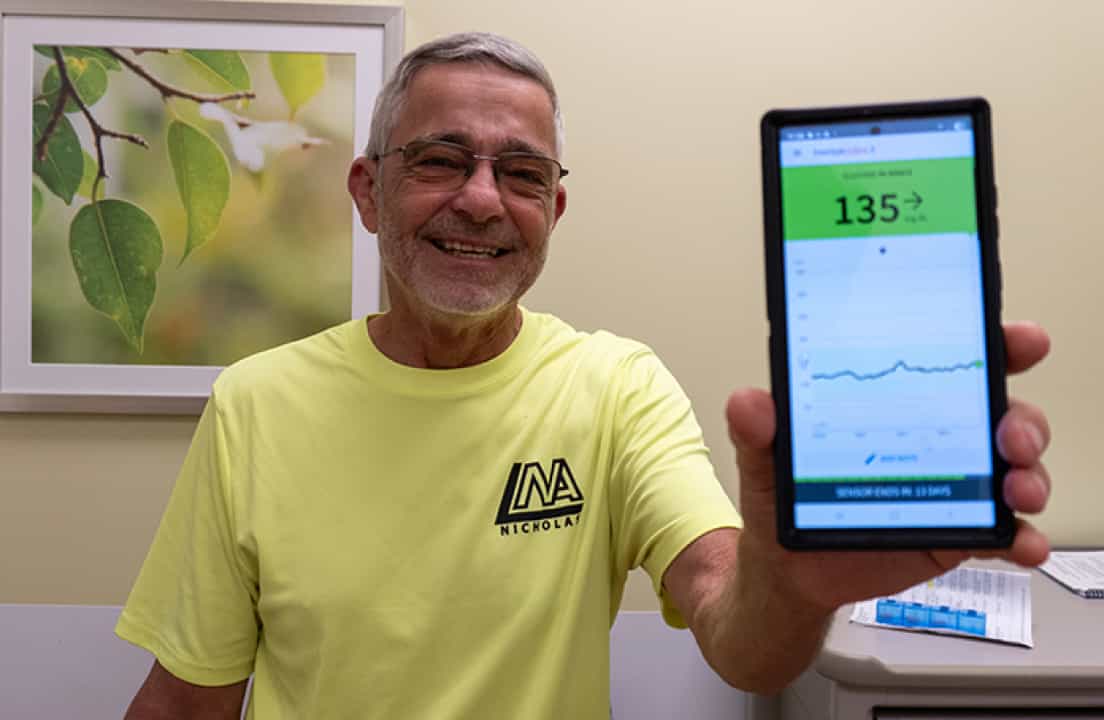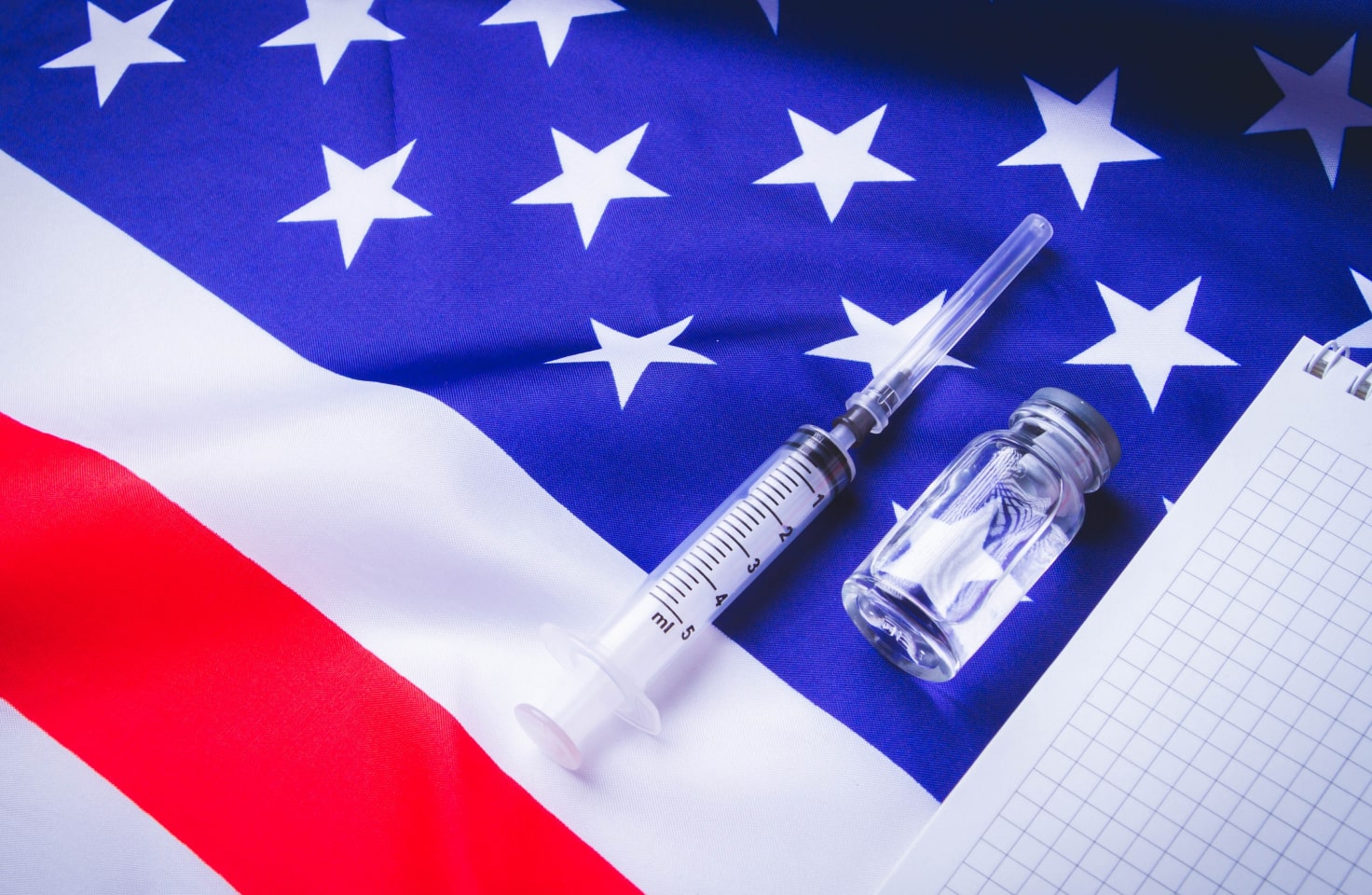T1D Guide
T1D Strong News
Personal Stories
Resources
T1D Misdiagnosis
T1D Early Detection
Research/Clinical Trials
Diabetes and Nutrition: Why What You Eat Matters
To kick off National Nutrition Month®, T1D Strong is featuring articles on healthy living and nutritious food choices. The 2024 theme for National Nutrition Month is Beyond the Table, which relates to farm-to-table eating trends. The movement, which allows people access to fresh, healthy foods all year while supporting farmers and local economies, is gaining momentum nationwide.

Farm-to-Fork Culture
It’s no coincidence the rise of the farm-to-fork culture coincided with the downfall of processed foods. National Nutrition Month (NNM) stresses the importance of a balanced diet and exercise—when you have type 1 diabetes (T1D), your meal times, carbohydrate levels, and diet must be carefully monitored.
NNM is sponsored by the Academy of Nutrition and Dietetics (AND), whose mission is to promote healthy living through research, education, and advocacy.
Watch What You Eat
The sad truth is food isn’t what it used to be. Certain varieties of fruits and vegetables may be genetically modified, and we can’t always trust the U.S. Food and Drug Administration to protect us. There appears to be a growing number of chemical additives the FDA is not tracking, which concerns some scientists. National Public Radio (NPR) reported: “In the past five decades, the number of food additives has skyrocketed – from about 800 to more than 10,000. They are added to everything from baked goods and breakfast cereals to energy bars and carbonated drinks.”
Pro Tip: Find farm-to-table restaurants in your neighborhood that buy from local suppliers.

Why All the Additives?
The World Health Organization cites, “additives are added to ensure processed food remains safe and in good condition throughout its journey from factories or industrial kitchens to warehouses and shops and finally to consumers. Additives are also used to modify food’s sensory properties, including taste, smell, texture, and appearance.”
Besides additives, other chemicals found in food come from pesticide-ridden crops, industrial chemicals released into the environment and other ‘chemicals’ used in food packaging products.
With more autoimmune diseases, types of cancers and obesity on the rise, we have to look more closely at the food we consume regularly. When we consider the harmful hidden preservatives in almost everything in our kitchen cupboard, it can be overwhelming. Still, rather than go down a rabbit hole of despair, there are a few simple steps to safeguard your and your family’s wellbeing.
T1D Nutrition
When you have type 1 diabetes, you must read labels for carbohydrates anyway, so why not keep reading the extra fine print to see what’s going into your body? Whether it’s chemically modified or maligned with additives and hydrogenated oils (trans fats)—be informed about what you’re ingesting.

It’s true that ‘healthy eating’ takes more work and is more expensive—but do it anyway. Reading labels, articles, and books on your health can be as time-consuming as eating fresh organic fruits and vegetables are costly! However, your body and mind will thank you! We know food is related to brain health.
Scientists have found that certain foods may increase and decrease your risk for Alzheimer’s disease. The bottom line is to stay away from ultra-processed foods and increase brain-enhancing vitamins and minerals to starve off diseases. Following the MIND diet is an excellent way to keep your brain healthy.
T1D Healthy Diet
T1Ds Can Eat Anything They Want
We all know this statement is both true and false. Anyone can eat anything they want. Remember the guy who ate McDonalds for a year? No one tried to stop him or call the food police. The idea behind eating whatever you want when you have type 1 diabetes is shrouded in stigma.
People love to judge one another and say, “You can’t eat that if you have diabetes!” The medical profession took it to the extreme by saying, “You can eat anything—you just have to dose with insulin for it.” The message behind dosing for all foods that contain carbohydrates rings true—if you eat a piece of chocolate cake or an apple – your body needs insulin for both.
However, we all know which is the better food choice for us, which will cause a blood sugar spike, and which is rich in fiber, loaded with antioxidants and reduces the risks of many diseases. Also, apples improve gut and brain health, and as founding father Ben Franklin said, ‘An apple a day keeps the doctor away.” It makes sense to take heed to the man who invented the stove, bifocals, catheter, and the lightning rod to keep our houses from burning down.
What T1Ds Should Eat
Whether you’re trying to lose weight, sleep better, starve off diseases, increase your longevity, or simply feel good—did you know there is a list of food choices that meet these objectives?
The Mayo Clinic promotes an anti-inflammatory diet packed with vegetables, fruits, whole grains, and healthy fats. Making better food choices with healthy meal planning can ease chronic inflammation, control blood sugar levels, and help you live longer.
Diabetes Plate Method
A good rule of thumb in diabetes care management that promotes a healthy weight, glycemic control, and blood glucose control is the Diabetes Plate Method. According to the American Diabetes Association (ADA), the Diabetes Plate Method helps manage blood sugar and target range through a portioned meal plan of non-starchy vegetables, lean protein and carbohydrates.
Fill half your plate with vegetables, one-quarter of the plate with protein foods and the last quarter of the plate with carbs. The well-balanced plate should also include dietary fiber, healthy fats, a glass of water, or a calorie-free drink.

T1D Eating and Blood Glucose
To best monitor blood sugar levels and maintain a healthy diet, it’s always best to speak with a certified diabetes educator. Your diabetes healthcare team should be able to recommend a trained diabetes educator in your area. Also, always check with your physician before starting any new diet. Diabetes care and education specialist Carla Cox said, “It’s not like you should have this special diet that only works for people with diabetes. Eating healthy includes watching your carbs, moderating them, or at least thinking about them when dosing insulin. Also, eat foods in their natural state (an apple instead of apple juice) and add protein. When you eat protein before or mixed in with carbohydrates—the rise in glucose is slower.”
Diabetes Meal Plan
Carbohydrates
Glorious, gluttonous carbs, a T1D’s best and worst friend, shouldn’t be avoided completely as they are very important to your daily health. The best carbs should come from whole grains.
Some examples include:
- Brown rice
- Oatmeal
- Wheat pasta
- Whole wheat bread and tortillas
- Polenta
- Quinoa
- Beans: Black, kidney, pinto, and garbanzo (chickpeas)
- Fruits and dried fruit
- Non-starchy vegetables: acorn squash, butternut squash, green peas, potatoes, pumpkin, sweet potatoes/yams
- Dairy products: milk and milk substitutes, yogurt, and low-fat cheese
- Popcorn
Fats
Contrary to popular belief, fats will not make you fat! In fact, when combined with other food sources, fats rich in omega-3 fatty acids work in a way to provide you with fuel-burning energy. Of course, you should avoid trans fats and saturated fats, but healthy fats are good for you.
The list of healthy unsaturated fats includes:
- Avocados
- Nuts and organic peanut butter
- Eggs
- Flaxseed
- Salmon, sardines, herring, and black cod
- Extra virgin olive oil
Proteins
Protein is vital to a T1D diet as it has many fitness benefits, like building lean muscle, speeding recovery, curbing hunger, and increasing energy. What’s more, the National Institutes of Health cites that “a high protein diet is associated with improved glycemic control following exercise.”
Pro Tip: More trips to the grocery store are inevitable when eating healthy, as buying fresh produce is vital.

Here are some lean protein options:
- Chicken, turkey and eggs
- Fish (salmon, cod, tuna, tilapia and swordfish)
- Shrimp, scallops, clams, mussels, and lobster
- Cheese and cottage cheese
- Lean beef, pork, and deli meats
Pro Tip: Avoid processed deli meats and hot dogs, but if you must, only buy brands that contain ‘no nitrates or nitrites.’ (Evidence from Cancer.net suggests that processed meats are linked to elevated cancer risk).
Animal protein should be limited, with better protein sources from fish, low-fat cheeses, yogurt, beans, soybeans, chickpeas, and soy products. Plant-based sources of protein include beans, nuts, edamame, and tofu.
Diabetes Superfoods
The ADA suggests that some foods benefit individuals with T1D and T2D. These foods have a low glycemic index and contain ample fiber. The glycemic index scale ranks food from 1 to 100 based on their effect.
Add these gems to your everyday diet:
- Beans
- Dark green leafy vegetables
- Citrus fruit
- Sweet potatoes
- Berries
- Tomatoes
- Fish high in omega-3
Foods to Avoid
If you’re unfamiliar with the ‘birthday cake rule,’ it suggests that indulging in certain foods rarely for special occasions is okay. Ultra processed foods should be limited to a special day at the theme park or baseball game.
This is where reading food labels becomes essential. Processed foods like chips, crackers, cookies, breakfast ‘energy’ bars – virtually anything made with high fructose corn syrup or partially hydrogenated oils - should raise flags.

Here are some other foods to monitor:
- Sugary breakfast cereal, cakes, biscuits, pastries and candies
- Fried foods
- Refined grains and simple carbs found in white bread, pasta and rice
- Juice drinks and sodas laced with high-sugar
- Yogurt with added sugar
Top 8 Worst Food Preservatives and Additives to Avoid
The following additives used to preserve food have possible links to cancer.
- Sodium nitrite and sodium nitrate (Found in bacon, ham, salami, corned beef, lunch meat).
- BHA and BHT (Butylated hydroxyanisole (BHA) and butylated hydroxytoluene (BHT) (Found in cereal, sausage, hot dogs, gum, chips, beer, candy and Jell-o).
- Potassium bromate (Found in bread, rolls, and flour.) It’s banned in the EU and Canada because it has been shown to cause cancer in animals.
- High-fructose corn syrup (Found in soda, salad dressing, bread, cereal, yogurt, canned soups, lunch meats, and condiments). It’s been shown to contribute to weight gain, cardiovascular disease and insulin resistance.
- Trans fat, hydrogenated vegetable oil, or partially hydrogenated oil (Found in fried foods, chips, baked goods, and fast food).
- Titanium dioxide: The food additive found in Skittles, titanium dioxide, is currently banned in Europe, Qatar, Saudi Arabia and Yemen.
- Red dye 40: U.S. News and World Report cited this synthetic food dye found in sweets and beverages has been suspected to increase the risks of bladder cancer and ADHD in children and adults.
- Monosodium glutamate (MSG) (Found in frozen dinners, salty snacks, canned soups and fast food).
Pro Tip: When treating low blood sugar, look for all-natural fruit juices, gels and glucose tablets. California recently passed bill AB-148, called the California Food Safety Act, forbidding the use of certain ingredients linked to health problems. These ingredients are found in Betty Crocker icings and Chips Ahoy!, as well as some cookies and flavors of Trident sugar-free gum.

Eat Good to Feel Good
So, there’s the best and worst of it. It is disheartening that we must become our own food police for ourselves and our families, but making some tiny adjustments might just be worth it in the long run. Developing healthier eating habits won’t happen overnight, but you’ll get there little by little. Try to eat whole foods, shop the perimeter of the grocery store and limit the food ingredients you can’t pronounce!


.webp)





.webp)

.jpeg)
.jpg)






.jpg)

.jpg)



.jpg)

.jpg)




.jpg)
.jpg)
.jpg)
.jpg)
.jpg)
.jpg)
.jpg)

.jpg)
.jpg)

.jpg)



.jpg)
.jpg)
.jpg)

.jpg)

.jpg)














.jpg)


.jpg)







.webp)












.webp)



















.webp)











.webp)